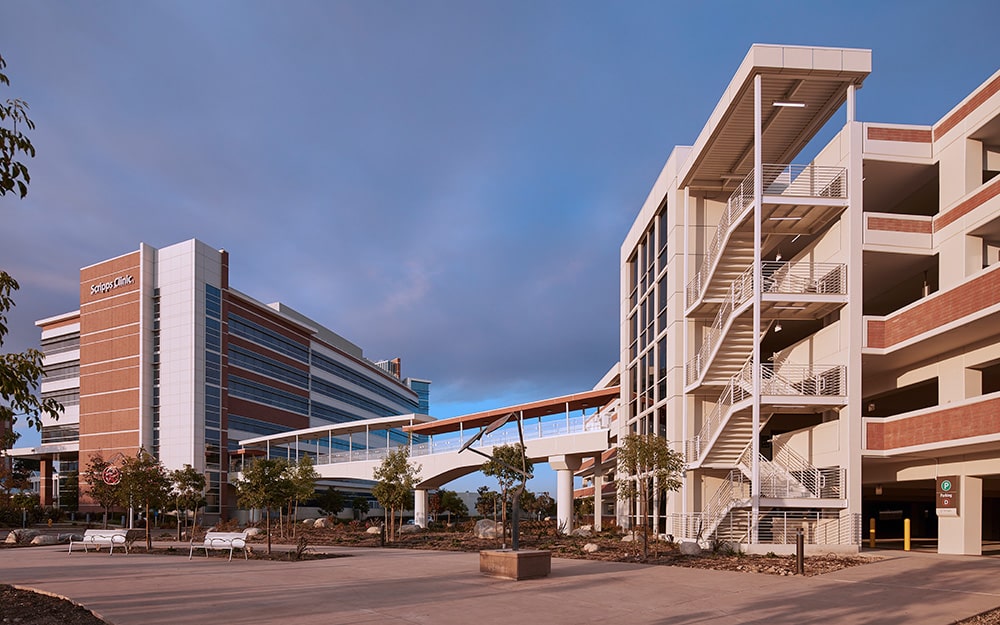
Impacting Transportation Equity
Transportation equity requires understanding the needs of every person potentially
Share:
Share:
Home » November 2023 » What Will Be the Impact of Technology on Large-Scale Parking Operations?

“
Technology is making us cleaner, greener, and faster. Our industry is advancing at a pace never seen before. Although this may all sound positive, implementing and managing the new technologies stretches our resources, staff, and minds. This can add stress but let’s all savor the excitement for the progress.”

“
Technology is allowing campuses to move away from physical credentials, parking hardware (meters, pay stations, ticket spitters, etc.) and move to mobile-based payment and license-plate based permits. We’re seeing permit management systems be able to be a one-stop SaaS that does residential, and commuter permits while also facilitating hourly, mobile payments. Cameras have also vastly improved and the ability to collect real-time occupancy data with LPR cameras is gaining ground. The demand for daily commuter parking permits has also grown as hybrid work settles in.”

“
The implementation of technology enabled mobility—parking promises to bring transformative benefits to parking operations, both immediately and in the future. I envision technology as a key driver of efficiency and accessibility that will result in economic growth.”

“
Today’s technologies are improving efficiencies for both customers and organizations. Customers now have much more information about available services, as well as more control over how they use and pay for the services they select. At the same time, organizations can gather more data on how their services are used and can more effectively direct their planning and operational efforts.”

“
Technology continues to enhance parking options, particularly with payments. Being able to speed up exit times from facilities is key for traffic management. Mobility options are ever changing with new technology giving more individual flexibility but creating parking challenges.”

“
The biggest impact of technology for large parking owners is connecting people to parking and mobility services. Mobile apps enable instant interaction with all facets of these functions. Digital systems enable efficient location of and access to parking. It’s only getting easier over time.”

“Technological advances are assisting Cities in managing congestion along key corridors. The same can be leveraged to support large campuses. Real-time adaptive traffic management, digital wayfinding, V2I communication for parking guidance minimize campus user and visitor dilemmas and circling for a parking space. Interactive mapping, and smart mobility apps, along with micro-mobility options can optimize large campus mobility while promoting sustainability.”
HAVE A QUESTION? Send it to editor@parking-mobility.org and watch this space for answers from the experts.
The opinions and thoughts expressed by the contributors do not necessarily reflect the opinions and viewpoints of the International Parking & Mobility Institute or official policies of IPMI.
This article has been written and/or compiled by the staff of Parking & Mobility magazine.

Transportation equity requires understanding the needs of every person potentially

Parking Spotlight International Parking Design NAG® Design & Art Direction

Aside from electric and automated vehicle use, what “green” practices
Parking & Mobility is IPMI’s flagship publication, covering the news, trends, analysis, technologies, and people of the parking and mobility industry, and how it affects and influences communities around the world.
| Cookie | Duration | Description |
|---|---|---|
| cookielawinfo-checkbox-advertisement | 1 year | Set by the GDPR Cookie Consent plugin, this cookie is used to record the user consent for the cookies in the "Advertisement" category . |
| cookielawinfo-checkbox-analytics | 11 months | This cookie is set by GDPR Cookie Consent plugin. The cookie is used to store the user consent for the cookies in the category "Analytics". |
| cookielawinfo-checkbox-functional | 11 months | The cookie is set by GDPR cookie consent to record the user consent for the cookies in the category "Functional". |
| cookielawinfo-checkbox-necessary | 11 months | This cookie is set by GDPR Cookie Consent plugin. The cookies is used to store the user consent for the cookies in the category "Necessary". |
| cookielawinfo-checkbox-others | 11 months | This cookie is set by GDPR Cookie Consent plugin. The cookie is used to store the user consent for the cookies in the category "Other. |
| cookielawinfo-checkbox-performance | 11 months | This cookie is set by GDPR Cookie Consent plugin. The cookie is used to store the user consent for the cookies in the category "Performance". |
| CookieLawInfoConsent | 1 year | Records the default button state of the corresponding category & the status of CCPA. It works only in coordination with the primary cookie. |
| elementor | never | This cookie is used by the website's WordPress theme. It allows the website owner to implement or change the website's content in real-time. |
| viewed_cookie_policy | 11 months | The cookie is set by the GDPR Cookie Consent plugin and is used to store whether or not user has consented to the use of cookies. It does not store any personal data. |
| Cookie | Duration | Description |
|---|---|---|
| _ga | 2 years | The _ga cookie, installed by Google Analytics, calculates visitor, session and campaign data and also keeps track of site usage for the site's analytics report. The cookie stores information anonymously and assigns a randomly generated number to recognize unique visitors. |
| _ga_02PMHW8YWC | 2 years | This cookie is installed by Google Analytics. |
| _ga_LC0QJJHM3J | 2 years | This cookie is installed by Google Analytics. |
| _ga_V9KYTSBYT2 | 2 years | This cookie is installed by Google Analytics. |
| iutk | 5 months 27 days | This cookie is used by Issuu analytic system to gather information regarding visitor activity on Issuu products. |
| Cookie | Duration | Description |
|---|---|---|
| mc | 1 year 1 month | Quantserve sets the mc cookie to anonymously track user behaviour on the website. |
| Cookie | Duration | Description |
|---|---|---|
| ultp_view_1052 | 1 day | No description |
| ultp_view_1058 | 1 day | No description |
| ultp_view_1060 | 1 day | No description |
| ultp_view_1064 | 1 day | No description |
| ultp_view_1068 | 1 day | No description |
| ultp_view_1070 | 1 day | No description |
| ultp_view_1072 | 1 day | No description |
| ultp_view_1078 | 1 day | No description |
| ultp_view_1082 | 1 day | No description |
| ultp_view_1088 | 1 day | No description |
| ultp_view_1100 | 1 day | No description |
| ultp_view_1103 | 1 day | No description |
| ultp_view_1114 | 1 day | No description |
| ultp_view_1118 | 1 day | No description |
| ultp_view_1122 | 1 day | No description |
| ultp_view_1125 | 1 day | No description |
| ultp_view_1130 | 1 day | No description |
| ultp_view_1132 | 1 day | No description |
| ultp_view_1135 | 1 day | No description |
| ultp_view_1541 | 1 day | No description |
| ultp_view_1554 | 1 day | No description |
| ultp_view_1557 | 1 day | No description |
| ultp_view_1560 | 1 day | No description |
| ultp_view_1563 | 1 day | No description |
| ultp_view_1568 | 1 day | No description |
| ultp_view_1572 | 1 day | No description |
| ultp_view_1576 | 1 day | No description |
| ultp_view_1580 | 1 day | No description |
| ultp_view_2305 | 1 day | No description |
| ultp_view_2321 | 1 day | No description |
| ultp_view_2338 | 1 day | No description |
| ultp_view_2342 | 1 day | No description |
| ultp_view_259 | 1 day | No description |
| ultp_view_270 | 1 day | No description |
| ultp_view_275 | 1 day | No description |
| ultp_view_286 | 1 day | No description |
| ultp_view_3074 | 1 day | No description |
| ultp_view_3115 | 1 day | No description |
| ultp_view_3334 | 1 day | No description |
| ultp_view_3336 | 1 day | No description |
| ultp_view_3338 | 1 day | No description |
| ultp_view_3340 | 1 day | No description |
| ultp_view_3346 | 1 day | No description |
| ultp_view_3354 | 1 day | No description |
| ultp_view_3361 | 1 day | No description |
| ultp_view_3367 | 1 day | No description |
| ultp_view_365 | 1 day | No description |
| ultp_view_367 | 1 day | No description |
| ultp_view_38 | 1 day | No description |
| ultp_view_3846 | 1 day | No description |